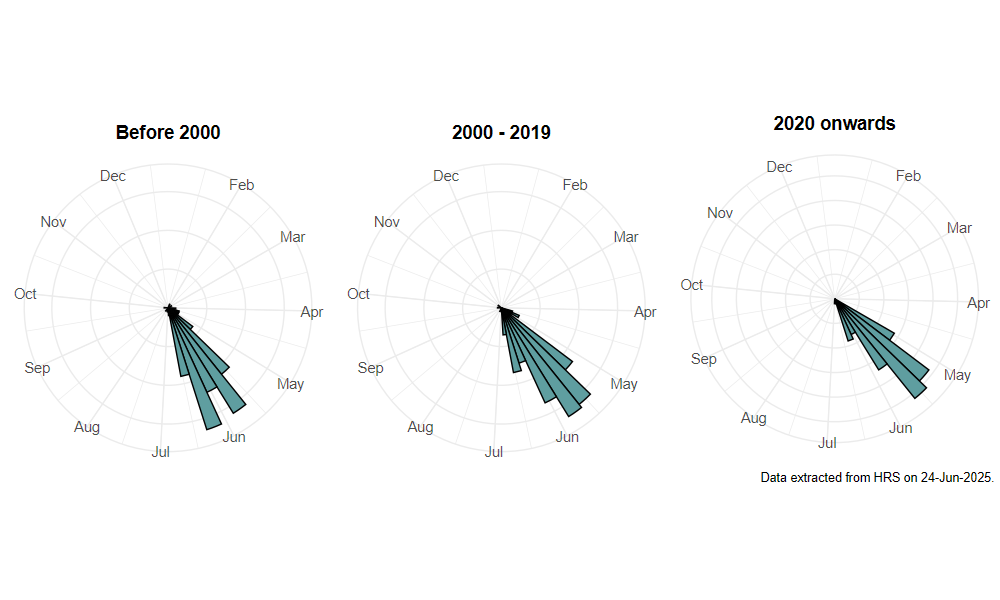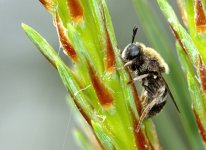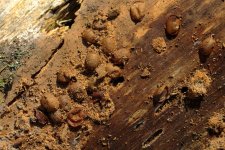Microdon analis (Macquart, 1842)
Identification
Identification difficulty = 3. ![]()
![]() according to Ball & Morris, 20241
according to Ball & Morris, 20241
Synonymy
Microdon eggeri Mik in Stubbs & Falk (1983)2.
Biology
This is a woodland and heathland species . It is also reported from areas of windblow within former conifer plantations that were felled by the Great Storm of 1987. The larva is a predator of ant broods within the nests of the black ant Lasius niger (agg.). Its characteristic domed shape and marginal fringe provide protection from ant bites. The larva is usually found in ant colonies within Scots Pine Pinus sylvestris and Birch Betula sp. stumps and can be numerous. Adults are rarely encountered and are most frequently found by sweeping as they are not regular flower visitors.
Flight period
The following plots show the number of unique records per week excluding those reported to be of immature stages.

Status
Lower Risk (Nationally scarce) - Ball & Morris, 20143. Notable - Falk, 19914. Rare (RSB3) - Shirt, 19875.
Distribution
The distribution is disjunct with populations in southern England on the heaths of Berkshire, Surrey, Sussex, Hampshire and Dorset, and again in the Highlands of Scotland where it occurs in Caledonian pine forest at localities such as Rothiemurchus Forest, Glen Affric, the Black Wood of Rannoch and Loch Garten.

Trends
The following plots show the Frescalo TFactor vs year and a map of the rescaled frequency (all records) for the species.
-
Ball, S., & Morris, R. (2024). Hoverflies of Britain and Ireland. WILDGuides (3rd ed.). Oxford: Princeton University Press. ↩
-
Stubbs, A., & Falk, S. (1983). British Hoverflies: An Illustrated Identification Guide (1st ed.). Reading: BENHS. ↩
-
Ball, S., & Morris, R. (2014). A review of the scarce and threatened flies of Great Britain. Part 6: Syrphidae. ( No. 9). Species status (pp. 1–130). Peterborough: JNCC. ↩
-
Falk, S. (1991). A review of the scarce and threatened flies of Great Britain. ( No. 39). Research and Survey in Nature Conservation (pp. 1–194). Peterborough: NCC. ↩
-
Shirt, D. (Ed.). (1987). Red Data Books: 2. Insects. Peterborough: NCC. ↩

